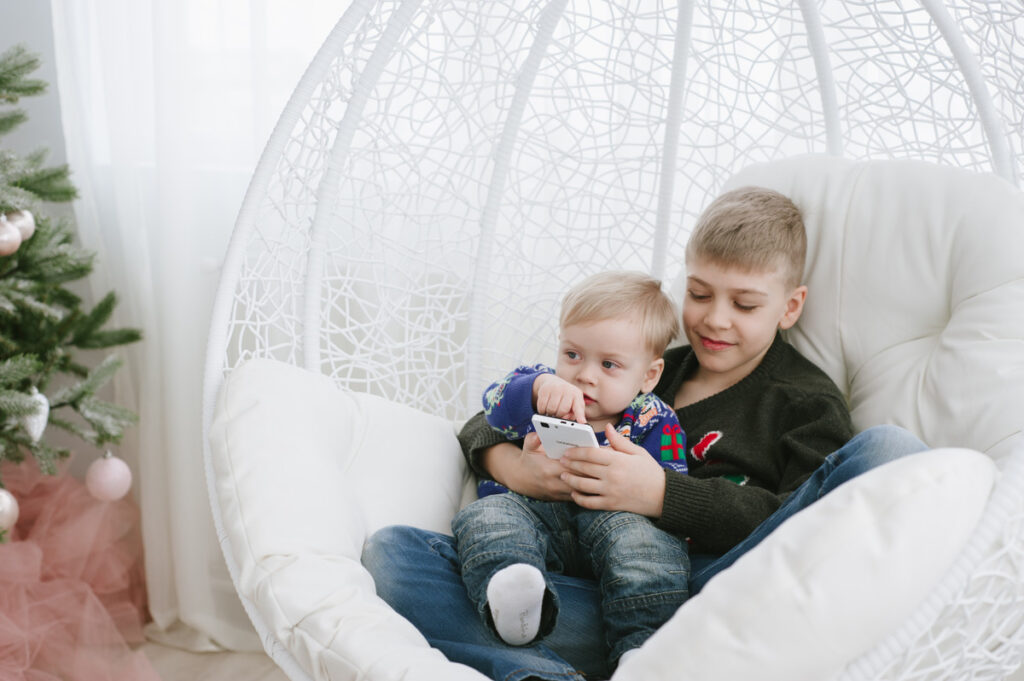All those sleep-deprived parents of toddlers out there might agree that getting their little one to sleep is the most challenging chore of the day. Not even a year has passed since they started sleeping through the night, and suddenly, they’re in a sleep regression phase. That hour before they eventually fall asleep tests our every limit. We might have some tricks up our sleeve on some nights, but yesterday’s strategy won’t work the next day. Why is it so hard to avoid a toddler meltdown at bedtime, and what can we do about it?
Understanding Toddler Bedtime Tantrums
Tantrums are a widespread occurrence during toddlerhood. This stage of development often leads to problems with transitions, including bedtime struggles. For toddlers, transitions from one activity to another can be jarring, especially if they enjoy what they’re doing. Whether moving from playtime to dinner, leaving the park, or going to bed after watching cartoons, these transitions can trigger resistance and tantrums. A toddler meltdown at bedtime is not a pretty sight, but there are ways to avoid it.
Unraveling Tantrums: Common Triggers
It’s well documented that any type of sleep disturbance affects mood and the ability to regulate emotions. That is why a lack of consistency in a toddler’s bedtime routine can set off an ongoing cycle of tantrums and refusals.
While your child might claim they need another snack, a glass of water, or another bedtime story, these demands often mask underlying needs that may be less obvious. Understanding the needs beneath these tantrum triggers can help parents and caregivers manage them. Awareness is the first step in replacing the struggle with a consistent bedtime routine. A routine that includes brushing teeth with no fuss, a calmer child at bath time, and a restful good night’s sleep after a long day. Here are a few things that can cause a toddler meltdown at bedtime.
1. Different bedtime routine than older siblings
When a younger child has an earlier bedtime than older siblings, they may feel confused or jealous. For example, if an older sibling gets to watch a show or play a game after the younger one’s bedtime, you can get resistance and tantrums from the little one.

Credits: Pexels
2. Separation anxiety – the fear of sleeping alone
Young children often struggle with being alone. This separation anxiety can be a significant cause for bedtime tantrums. If a child clings or cries when it’s time for bed, claiming a fear of the dark or of sleeping alone, it may be rooted in separation anxiety.
3. Night terrors
Night terrors are more intense than regular nightmares and can be frightening for a child. They can get them to wake up crying inconsolably in the middle of the night. A child who experiences night terrors might also suffer from sleep deprivation.
4. Overstimulation before bedtime – screen time or active play
Activities like watching TV or engaging in active play shortly before bedtime can get a child overstimulated. Overstimulation is not just a state of excitement; it’s a sensory and emotional overload that can be confusing and exhausting for a child. Symptoms might include restlessness, hyperactivity, and difficulty falling asleep.
5. Undetected discomfort of health issues
Sometimes, underlying health issues or discomforts, such as teething pain, allergies, or an ill-fitting pair of pajamas, can be the root cause of a toddler meltdown at bedtime. These background issues and their underdeveloped language skills can lead to a fussy child at bedtime.
👉 Struggling with your impulsive child? Discover effective strategies in our article ‘Raising Resilient Children: How to Control Impulsive Behavior in Child.’ Learn more now!
5 Techniques to Soothe a Toddler Meltdown at Bedtime

Credits: Pexels
Soothing a toddler meltdown at bedtime. Hard, but not impossible. The key lies in your ability to keep calm and in your creativity to redirect attention from upsetting stimuli to relaxing techniques. You know your child best. Some react positively to touch and soft talk, others to music or bedtime stories. Here are some ways to bring more peace to the bedtime routine and improve your child’s sleep schedule.
1. Embrace the Power of Soft Lullabies
Research suggests that infants and toddlers prefer their mother’s voice over other voices. They’ve been hearing and recognizing it for months in utero. When small children are upset or distressed, their mother’s voice can often soothe them faster than other interventions.
Lullabies are not just songs; they are tools that create an intimate space of comfort, safety, and love. Their simple melodies carry profound power, calming restless minds and nurturing the budding brain of a child.
Whether a song hummed by a parent or caregiver during the bedtime snuggle or soothing music played from a musical box, a lullaby brings warmth and bonding through touch, voice, sound, and shared emotion.
2. Tender Touch: The Magic of Gentle Massages
Toddlers have boundless energy. While this enthusiasm is a sign of healthy development, it can sometimes be challenging to help them wind down, especially during bedtime. Incorporating massage into their nighttime routine can act as a bridge, making the transition from active play to rest more easygoing.
Beyond the physical comfort massage provides, the emotional security it fosters is invaluable. In a protective, loving environment, the gentle process of massaging your child reinforces their feeling of being cared for and protected. When you make it a ritual, bedtime becomes a looked-forward-to experience rather than a dreaded challenge.
3. Guided Visualization for Peaceful Slumber
Guided visualizations can be an incredibly effective tool for easing bedtime meltdowns, especially for children like a 2 or 3-year-old. Unlike traditional storybooks, which may have exciting images that can energize rather than calm a child, guided visualization is about leading the child through a relaxing mental journey. It often involves pleasant scenes, gentle sounds, and soothing activities.

Credits: Pexels
When doing this with toddlers, simplicity is key. The imagery and narrative should be clear, positive, and easy to understand. Select a soothing theme the child enjoys, such as a walk on the beach, a garden filled with flowers, or floating on a soft cloud.
Lead the child through the experience by describing what they might see, hear, smell, and feel. For example, “Can you feel the warm sand between your toes? Can you hear the gentle waves?”. Adding a few calming phrases can help reinforce the calming effect, such as “Everything is calm and peaceful.” In the end, paint a comforting scene that leads to sleep, like a cuddle under a warm, soft blanket in a cozy bed.
This practice can become a soothing part of the bedtime routine that children look forward to, making the transition to sleep smoother. Over time, children may even learn to use these techniques to calm themselves.
4. Validate your Child’s Emotions
Bedtime battles can undoubtedly strain a household, and sleep-deprived parents may find themselves at a loss for elaborate strategies. In these moments, empathy and clear communication, including “I statements,” can be incredibly effective. Start by acknowledging the child’s feelings. A simple statement like, “I see you’re upset because it’s bedtime; you were having so much fun playing with your toys, didn’t you?” can go a long way in making the child feel understood.
Additionally, by expressing your own feelings, you help your child understand the situation from your perspective. Saying something like, “I am feeling very tired right now. It’s hard for me to wake up in the morning if I don’t get enough sleep,” can increase your child’s perception and empathy toward other people’s feelings.
Smooth transitions are vital to preventing outbursts. Gradually prepare your child for the upcoming moment, giving gentle reminders that bedtime is approaching. Allow them to feel a sense of control over this transition by creating an opportunity for making a few choices within the nap time routine. For example, you can allow your child to make simple decisions, such as choosing the bedtime story or picking pajamas. This simple addition helps the child feel engaged and involved in the process, reducing power struggles.
👉 Your child wants to watch TV when it’s bedtime instead of listening a bedtime story for kids? Find out how to set healthy limits with our article on Effective Screen Time Management for Kids.
5. Calming Through Deep Breathing Exercises
For small children, especially those struggling with bedtime tantrums or overstimulation, deep breathing can be a powerful tool to help them calm down. Deep breaths help children take in more oxygen, slow down their heart rates, and disconnect their minds from surrounding stimuli.

Credits: Pexels
For efficient sleep training, it’s best to introduce deep breathing exercises during calm moments. It helps them associate the practice with a positive experience. By turning deep breathing into interactive and imaginative play, children can learn this essential self-calming technique without even realizing they’re practicing it. Here are a few fun examples that can be integrated into daily routines, play, or bedtime rituals, making the learning process engaging and joyful:
- Taking Belly Breaths: Encourage them to lie down and place a small stuffed animal on their belly. They can watch it rise and fall as they breathe in and out, turning it into a playful exercise.
- Blowing Dandelions: If you’re outside, blowing dandelions can become a whimsical way to practice deep breaths. Teach them to inhale deeply, then blow out gently to send the dandelion seeds floating.
- Creating Wind with Breath: Have them pretend to be the wind, taking in deep breaths and blowing out slowly to make leaves or paper flutter.
- Dragon Breaths: Pretend to be a dragon taking deep breaths and slowly breathing out ‘fire.’ This can be incredibly engaging for children who love fantasy creatures.
- Ocean Wave Breathing: Children can mimic the sound of ocean waves by taking deep breaths in and out. This can be paired with a visualization of a calm beach day scene.
- Birthday Candle Breathing: Using pretend or drawn candles, have them blow out the ‘candles’ one by one with slow, controlled breaths.
Conclusion
Although sometimes overwhelming, having a toddler in the house can make everything lively and fun. They play hard, learn, and explore throughout the day. Things might get a little challenging at bedtime, especially when they’re overstimulated. If you’ve ever experienced a toddler meltdown at bedtime, you know it. The fuss, the tears, the “i don’t want to do this or that” that can test a parent’s patience.
Having consistent bedtime routines and soothing practices can make everything more peaceful. Try the techniques presented in the article and see which one works best for your child’s unique needs. Work with lighting, scents, sounds, or soft touch to create a relaxing atmosphere for your toddler and see them drifting off peacefully.
Want to learn more techniques to calm you and your child and avoid power struggles in your home? Join our live event 4 Steps to Calm You And Your Child During Tantrums, Hitting or Yelling Hurtful Things and forget about toddler meltdown at bedtime.
Need an answer now? Sophie, our clever AI assistant is here to help. She is ready to answer any question you might have and inspire you to discover new parenting superpowers.
References
Jiang, F. (2019). Sleep and Early Brain Development. Annal of Nutrition and Metabolism, 75(1). 44–54. https://doi.org/10.1159/000508055
Matricciani, L., Blunden, S., Rigney, G., Williams, M. T., & Olds, T. S. Children’s Sleep Needs: Is There Sufficient Evidence to Recommend Optimal Sleep for Children? Sleep, 36(4), 527-534. https://doi.org/10.5665/sleep.2538
Matsuoka, M., Matsuishi, T., Nagamitsu, S., Iwasaki, M., Iemura, A., Obara, H., Yamashita, Y., Maeda, M., Kakuma, T., & Uchimura, N. (2022). Sleep disturbance has the largest impact on children’s behavior and emotions. Frontiers in Pediatrics, 10, 1034057. https://doi.org/10.3389/fped.2022.1034057
Ordway, M. R., Logan, S., & Sutton, E. H. (2022). Sleep Deficiency in Young Children. Clinics in Chest Medicine, 43(2), 229-237. https://doi.org/10.1016/j.ccm.2022.02.007
Poćwierz-Marciniak, I., & Harciarek, M. (2021). The Effect of Musical Stimulation and Mother’s Voice on the Early Development of Musical Abilities: A Neuropsychological Perspective. International Journal of Environmental Research and Public Health, 18(16). https://doi.org/10.3390/ijerph18168467
Seltzer, L. J., Ziegler, T. E., & Pollak, S. D. (2010). Social vocalizations can release oxytocin in humans. Proceedings of the Royal Society B: Biological Sciences, 277(1694), 2661-2666. https://doi.org/10.1098/rspb.2010.0567
Sundell, A.L., Angelhoff, C. (2021). Sleep and its relation to health-related quality of life in 3–10-year-old children. BMC Public Health 21 (1043). https://doi.org/10.1186/s12889-021-11038-7









